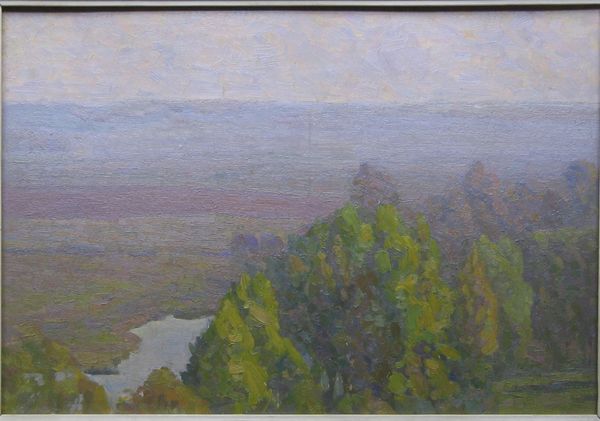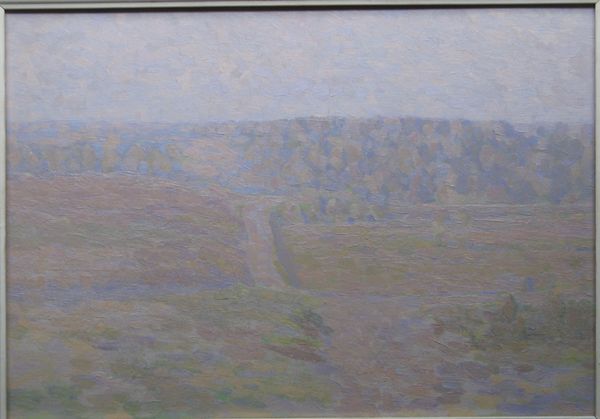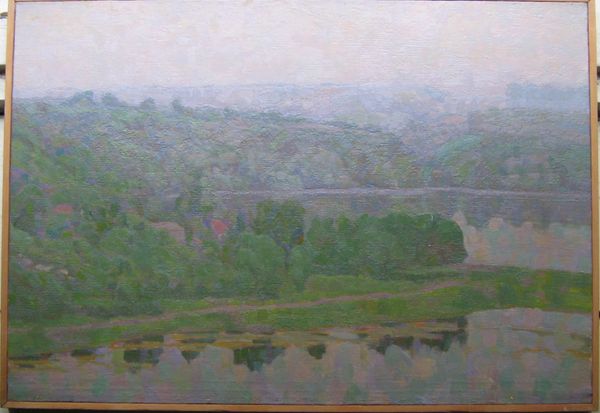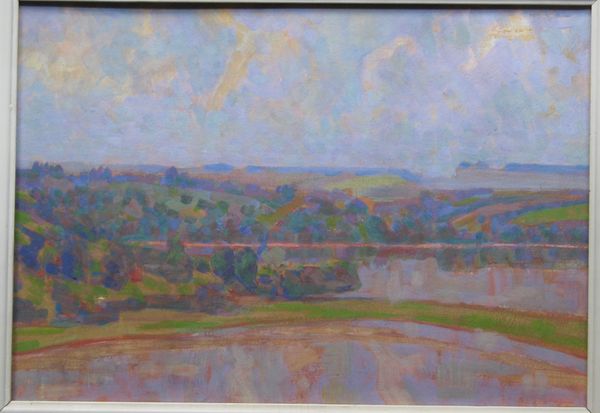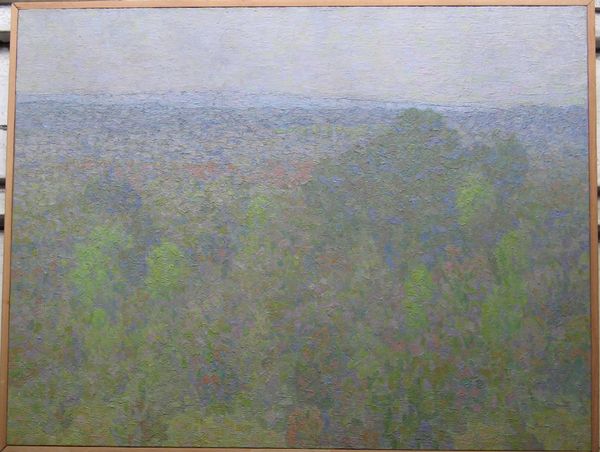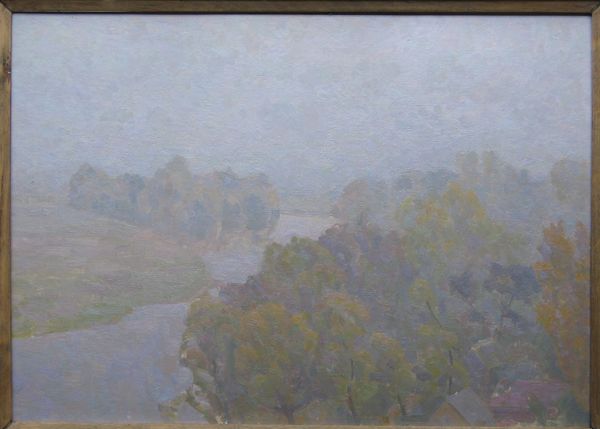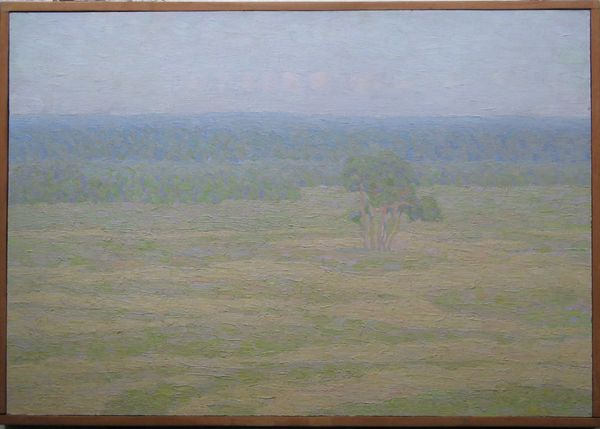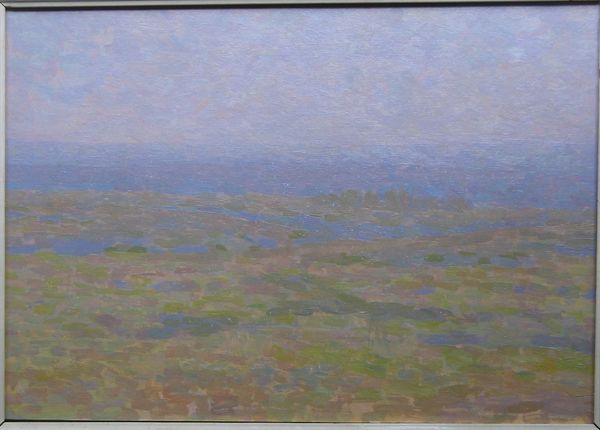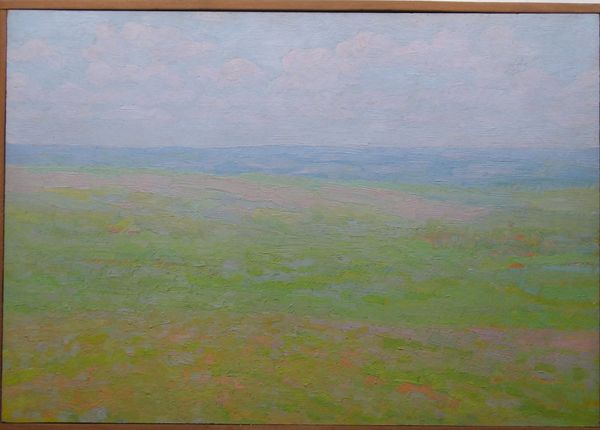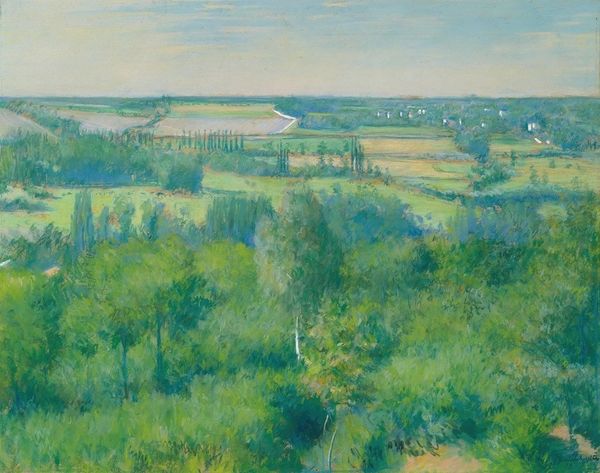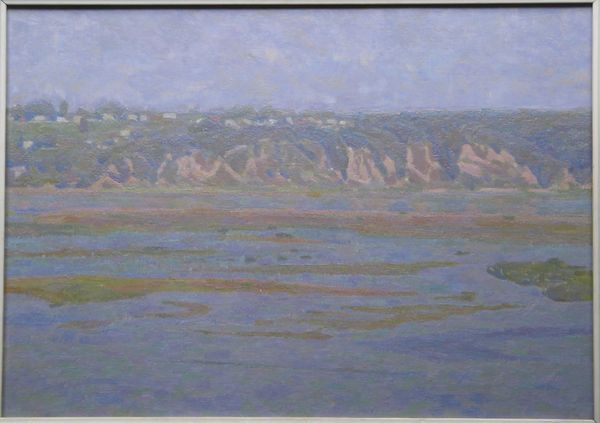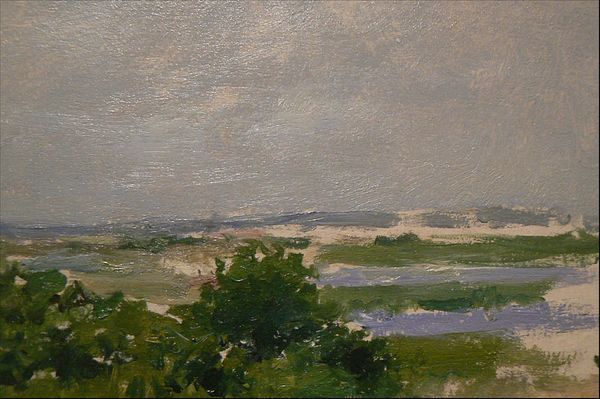
Copyright: Hryhorii Havrylenko,Fair Use
Curator: Gazing upon “Sedniv,” completed in 1977 by Hryhorii Havrylenko, currently residing in the National Art Museum of Ukraine, I’m immediately struck by the muted tones and almost ethereal quality of light. Editor: It feels… damp. The colours are beautiful, soft, yet the scene evokes a distinct sense of coolness, almost melancholy, in its hazy expanse. The texture seems incredibly rich, though restrained by the pervasive grey. Curator: Indeed, it's an excellent example of plein-air painting, a style deeply rooted in capturing the direct experience of a scene. One can almost feel the moisture in the air, and sense the labor involved with painting en plein air. Editor: Look at the application of colour—how the varied greens and browns create a rich tapestry in the midground, offset against the flatness of the sky, how does the use of complementary colours affect the scene, and how are our eyes are being led by it to the church in the background? The artist uses an Impressionistic style. Curator: Precisely. Havrylenko’s work underscores the shifting landscape of Ukrainian artistic identity, existing at a curious nexus point between socialist realism, expected at the time, and impressionist techniques which afforded more aesthetic freedom. Consider, for instance, the accessibility of paint and canvases during that time, and how the artist navigated those material conditions. Editor: You make me see the artist’s struggle—a delicate balance is at play here. It’s neither fully celebratory nor overtly critical. Curator: This duality captures the tension of the era, demonstrating how an artist’s individual interpretation filters into a wider, sometimes fraught social context. One has to admire the artist's intention by providing what he could given material circumstances at the time, in line with a socialist aesthetic of providing accessible and understandable art to the common person. Editor: Reflecting upon the artist's choices within that context casts this seemingly gentle landscape in a more thought-provoking light. Curator: It also helps me think about this work as more than the sum of its artistic parts—that it can function almost as a time capsule, providing a way to appreciate it for decades to come. Editor: It's been insightful to delve into the socio-political underpinnings while appreciating the aesthetic merits.
Comments
No comments
Be the first to comment and join the conversation on the ultimate creative platform.
